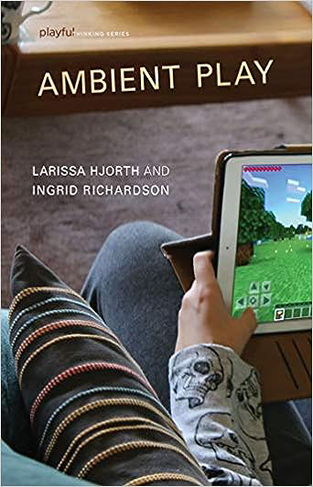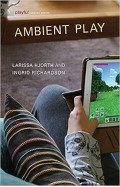Ambient Play
By: Larissa Hjorth
-
Rs 672.75
- Rs 1,495.00
- 55%
You save Rs 822.25.
Due to constant currency fluctuation, prices are subject to change with or without notice.
We often play games on our mobile devices when we have some time to kill--waiting in line, pausing between tasks, stuck on a bus. We play in solitude or in company, alone in a bedroom or with others in the family room. In Ambient Play, Larissa Hjorth and Ingrid Richardson examine how mobile gameplay fits into our day-to-day lives. They show that as mobile games spread across different genres, platforms, practices, and contexts, they become an important way of experiencing and navigating a digitally saturated world. Mobile games become conduits for what the authors call ambient play, pervading much of our social and communicative terrain. We become digital wayfarers, moving constantly among digital, social, and social worlds.
Hjorth and Richardson explore how households are transformed by media--how idiosyncratic media use can alter the spatial composition and emotional cadence of the home. They show how mobile games connect domestic forms of play with more public forms of playfulness in urban spaces, how collaborative play (both networked and face-to-face) is incorporated into private and public play, and how touchscreens and haptic play emphasize the perception of the moving body. Hjorth and Richardson invite us to think of mobile gaming as more than a "casual" distraction but as a complex cultural practice embedded into our contemporary ways of being, knowing, and communicating.
We often play games on our mobile devices when we have some time to kill--waiting in line, pausing between tasks, stuck on a bus. We play in solitude or in company, alone in a bedroom or with others in the family room. In Ambient Play, Larissa Hjorth and Ingrid Richardson examine how mobile gameplay fits into our day-to-day lives. They show that as mobile games spread across different genres, platforms, practices, and contexts, they become an important way of experiencing and navigating a digitally saturated world. Mobile games become conduits for what the authors call ambient play, pervading much of our social and communicative terrain. We become digital wayfarers, moving constantly among digital, social, and social worlds.
Hjorth and Richardson explore how households are transformed by media--how idiosyncratic media use can alter the spatial composition and emotional cadence of the home. They show how mobile games connect domestic forms of play with more public forms of playfulness in urban spaces, how collaborative play (both networked and face-to-face) is incorporated into private and public play, and how touchscreens and haptic play emphasize the perception of the moving body. Hjorth and Richardson invite us to think of mobile gaming as more than a "casual" distraction but as a complex cultural practice embedded into our contemporary ways of being, knowing, and communicating.
Zubin Mehta: A Musical Journey (An Authorized Biography)
By: VOID - Bakhtiar K. Dadabhoy
Rs 472.50 Rs 1,050.00 Ex Tax :Rs 472.50
Viva Dictionary Of Punctuation And Hyphenation
By: William Gould
Rs 135.00 Rs 150.00 Ex Tax :Rs 135.00
And Another Thing... (The Hitchhiker's Guide to the Galaxy)
By: Eoin Colfer
Rs 316.00 Rs 395.00 Ex Tax :Rs 316.00
Collins Pocket Italian Dictionary
By: Collins Dictionaries
Rs 1,491.75 Rs 2,295.00 Ex Tax :Rs 1,491.75
No similar books from this author available at the moment.
No recently viewed books available at the moment.
Zubin Mehta: A Musical Journey (An Authorized Biography)
By: VOID - Bakhtiar K. Dadabhoy
Rs 472.50 Rs 1,050.00 Ex Tax :Rs 472.50













-120x187.jpg?q6)













